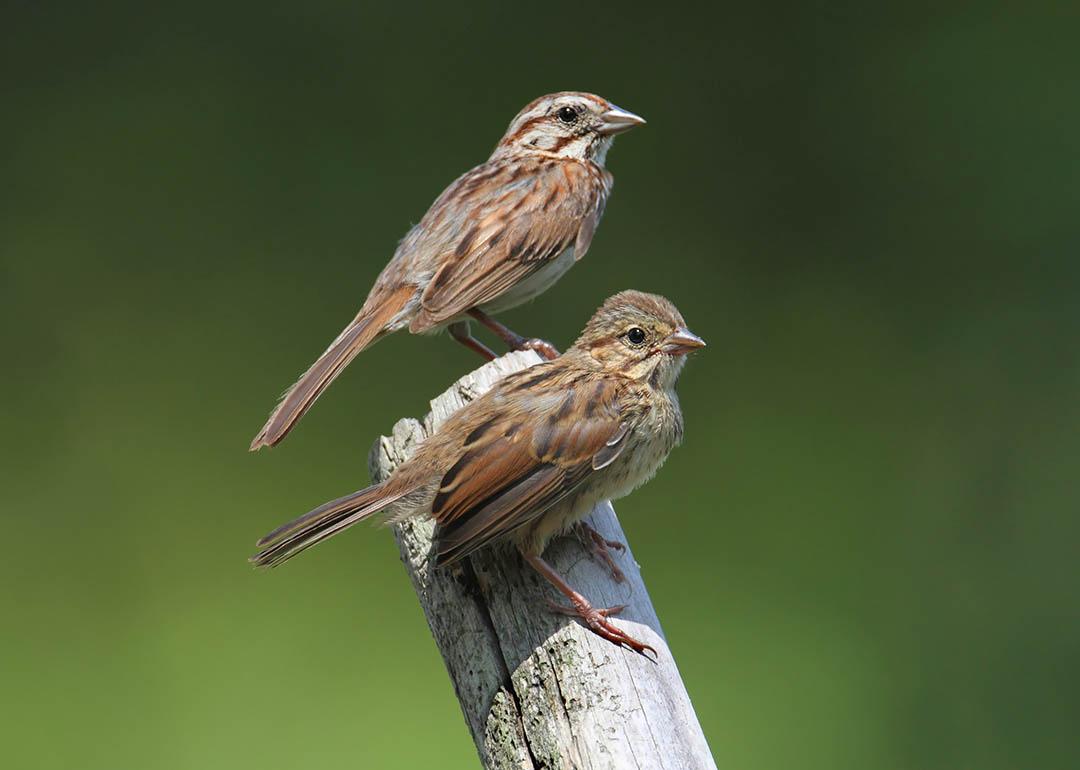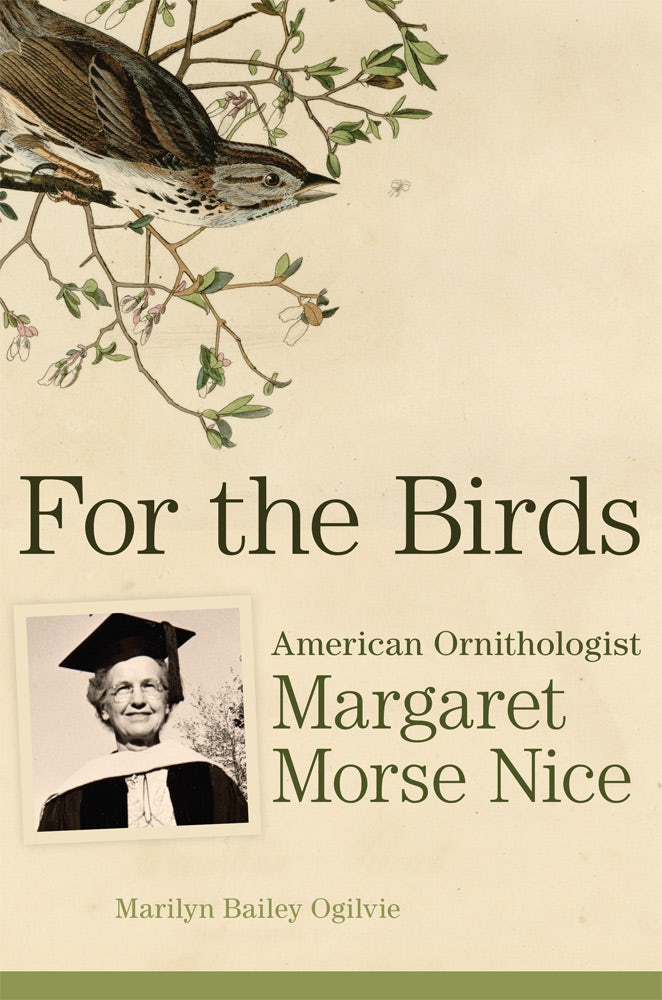
Margaret Morse Nice thought like a song sparrow and changed how scientists understand animal behavior
Margaret Morse Nice thought like a song sparrow and changed how scientists understand animal behavior
The invader, puffed out into the shape of a ball, fluttered one wing straight up in the air. He sang constantly and softly, incomplete songs in rapid succession. The defender, silent, hunched his shoulders in a menacing attitude, closely following every move of his foe.
This close observation, describing the territorial "ceremony" of two song sparrows, was made by a little-remembered scientist in the early 20th century. Margaret Morse Nice was a pioneering ethologist, bird-bander and ornithologist, who researched animal behavior for fifty years from the 1910s to the 1960s. "Territorial behavior" may be a common term today but, at the time, describing animals from the inside out was a radical departure from the "objective" methods of a dissection table or scientific lab.
Seeing the world as animals do is impossible, yet scientists try to do it all the time. I am a researcher who studies the history of science to understand how we know what we know about nature. This paradox has been central to research in field biology, from the behavioral ecology of birds to the evolutionary biology of snakes.
Nice's work in animal behavior, understanding animals by watching what they did and why, was part of a new branch of science called ethology. Her research was relatively obscure by contrast to her male contemporaries. But recently, Nice's standing in the field and history of science has gotten greater attention with the publication of a biography about her life, "For the Birds: American Ornithologist Margaret Morse Nice" by Marilyn Bailey Ogilvie.
An ambitious scientist in a male-dominated field
By any measure, Nice's career was astoundingly successful. But in the context of her life, her many scholarly achievements were even more remarkable. She was a wife and the mother of five daughters. As her husband's academic career advanced, their family moved frequently.
Yet, even without a Ph.D. or institutional support, she excelled in a male-dominated field. By the end of her life in 1974, she had produced an impressive body of literature, publishing hundreds of articles and thousands of reviews, and presented her work around the world. Her peers, such as Konrad Lorenz, Ernst Mayr and Aldo Leopold acknowledged her as an innovator in field ornithology and ethology. Lorenz wrote the foreword to Nice's autobiography, "Research Is a Passion With Me."
Margaret Morse, born in Amherst, Massachusetts, in 1883, was an avid outdoorsperson all her life. As a student at Mount Holyoke College, she found her zoology classes stultifying, with a focus on dissection and taxonomy that defined natural history at the time. This changed when she enrolled as a graduate student at Clark University in 1907. Faculty encouraged her in experimental and observational studies of animal behavior, and she began to research the feeding habits of the bobwhite.
She never finished her graduate studies, but instead married a fellow graduate student, Leonard Blaine Nice, in 1909 and soon began a family. Though by all accounts Nice had a happy marriage and satisfying family life, she nevertheless bristled at being labeled a housewife. When her children were young, she pursued her passion for research, including linguistic studies of her children's language development. She later returned to behavioral studies of birds apart from academia.

For Nice, home was where the real work began
It was her research on the song sparrow near her home in Columbus, Ohio, in the 1920s and 1930s that cemented her reputation as a brilliant observer and analyst of animal behavior. Through observation and incorporating the novel use of colored leg bands to distinguish individual birds, Nice was able to determine the meaning of territorial behavior, to establish who was menacing whom and to what end.
She described her technique as a "phenomenological method" and wrote about it as part of a study published in 1943. Affection and anthropomorphism are plain to see in Nice's work, particularly in her popularized account of song sparrow research. In this passage from "The Watcher at the Nest," she wrote, "When I first studied the Song Sparrows…I had looked upon Song Sparrow 4M as a truculent, meddlesome neighbor; but…I discovered him to be a delightful bird, spirited, an accomplished songster and a devoted father."
This perspective may seem naïve or overly subjective. But emotion and "sympathetic observation" go hand in hand and have been vital to ethologists, field biologists and ecologists from Nice's time to the present. Harry Greene, an ecologist at Cornell University, writes in "Tracks and Shadows" that scientists "use human perceptions, intuition, and feelings, our inner worlds, to forge novel, testable hypotheses about those of other species."
For some scientists and social theorists, the conceit that one could develop affection for an animal or understand what an animal thinks was a dangerous form of projection. Yet Nice's phenomenological method of studying bird behavior is, even today, an essential piece of how people see the natural world.
Editor's note: Kristoffer Whitney is Assistant Professor of Science, Technology and Society, Rochester Institute of Technology.
This story was produced by The Conversation and reviewed and distributed by Stacker Media.



